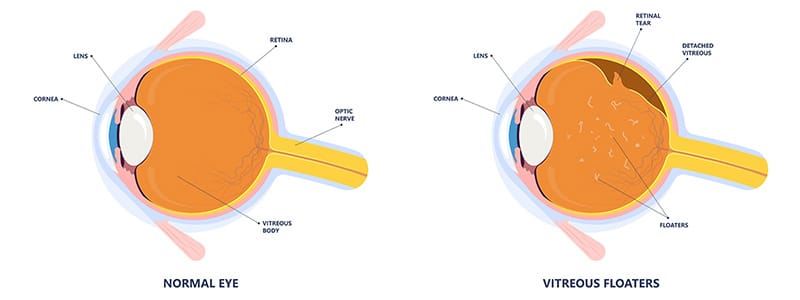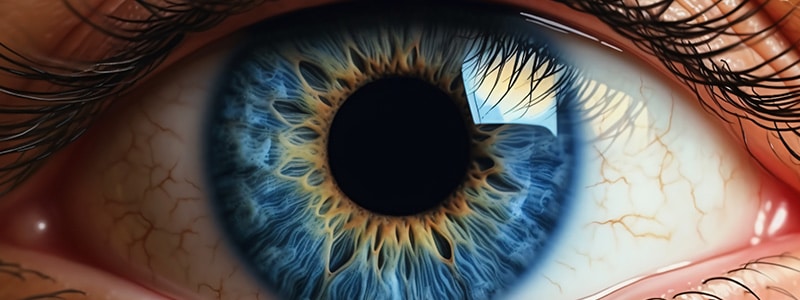Eye Floaters and Flashes: What You Should Know
When it comes to ocular health, eye floaters and eye flashes are common concerns that individuals often encounter. Although usually harmless, these phenomena can be alarming if you’re unaware of their origins and implications. In this guide, we will discuss the intricacies of eye floaters and flashes to equip you with the knowledge you need to understand and manage them effectively.
What Are Eye Floaters?
Eye floaters, often referred to as vitreous floaters, are tiny specks or cobweb-like structures that appear to drift across your field of vision. These elusive particles can manifest in various shapes and sizes and tend to move as your eyes move. So, what exactly causes these visual nuisances?
The Anatomy of Eye Floaters
Eye floaters typically originate within the vitreous humor, a gel-like substance that fills the eyeball. As we age, the vitreous humor undergoes changes, becoming less gel-like and more liquid. This transformation leads to the formation of tiny collagen fibers and cellular debris, which cast shadows on the retina, giving rise to floaters.
When to Be Concerned
While most floaters are benign and merely an inconvenience, some cases may warrant attention. If you suddenly notice a significant increase in the number of floaters, accompanied by flashes of light or changes in your peripheral vision, it may indicate a more severe issue, such as a retinal tear or detachment. In such instances, immediate consultation with an eye specialist is crucial.
Understanding Flashes of Light
Flashes of light, scientifically known as photopsia, are brief, sudden bursts of light that can resemble lightning bolts or sparks. These flashes may occur randomly or may be triggered by eye movements. So, why do they happen?
The Mechanism Behind Flashes
Flashes of light are often a result of mechanical stimulation of the retina. When the vitreous gel tugs on the retina due to changes in its consistency or movement, it can create a sensation of light. This can also happen during eye movements or when the vitreous gel pulls away from the retina, especially during aging.
When to Seek Medical Attention
In most cases, occasional flashes of light are not a cause for concern. However, if you experience frequent or persistent flashes, especially if they are accompanied by a sudden increase in floaters, it’s essential to consult an ophthalmologist promptly. These symptoms can be indicative of a retinal tear or detachment, which requires immediate medical intervention.
Managing Eye Floaters and Flashes
While eye floaters and flashes are often harmless, their presence can be bothersome. If you find these visual disturbances interfering with your daily life, several strategies can help alleviate their impact.
- Monitor Changes
Regularly monitor any changes in the number and severity of your floaters and flashes. If you notice a sudden increase or a significant change in your symptoms, don’t hesitate to contact an eye specialist. - Lifestyle Adjustments
Maintaining a healthy lifestyle, including a balanced diet, staying hydrated, and avoiding smoking, can contribute to better overall eye health and potentially reduce the occurrence of eye floaters and flashes. - Surgery
In rare cases where floaters significantly impair your vision and affect your quality of life, a surgical procedure known as vitrectomy may be considered. During this procedure, the vitreous humor is replaced with a saline solution, eliminating the floaters. However, this is a last resort and is typically only recommended for severe symptoms.
Eye floaters and flashes are a common occurrence, especially as we age. While they are typically harmless, it’s essential to understand when they might signal a more serious underlying issue. Regular eye check-ups and vigilant monitoring of changes in your visual symptoms are key to maintaining optimal eye health.
Remember, your eyes are invaluable, and preserving your vision is paramount. If you ever experience unusual changes in your vision, especially if they are accompanied by an increase in eye floaters and flashes, consult an eye specialist promptly to rule out any potential issues.
More Information about eye floaters and flashes.
Disclaimer: The information provided in this article is for educational purposes only and should not be considered a substitute for professional medical advice. Please consult with an eye care professional at Coastal Vision Center for personalized guidance regarding your eye health.







